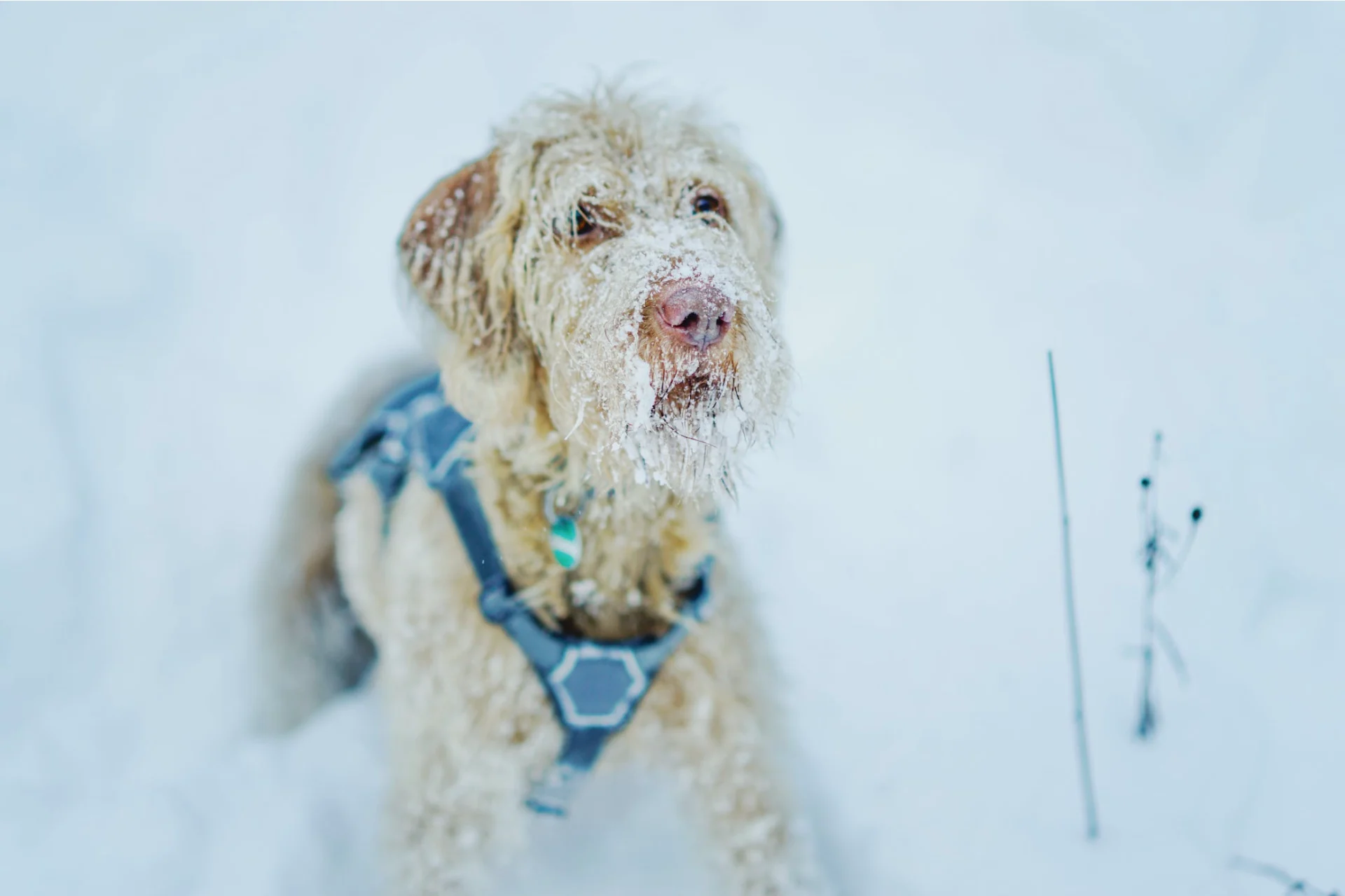
If it's too cold for you to be outside, it's too cold for your pets
If you're feeling cold when walking outside, chances are your furry companion is feeling the chill of the season too. Here are 5 ways to protect your pets this winter.
Canada is truly a magical place during the winter, but the season comes with its own set of challenges. Freezing temperatures, heavy snowfalls, and mixed precipitation can make the season difficult to navigate for any individual, but have you considered how the season impacts your closest companions?
Dogs that reside in Canada come from all around the world, so it’s important to understand your dog's breed to better protect their needs this winter.
Here are five ways to keep your dog safe this winter, in no particular order:
Protect for External Hazards
According to Dr. Karen Ward, DVM, Chief Veterinary Officer at Toronto Humane Society, one crucial way to protect your pets is to protect their paws.
“When we think about an urban environment, there are a lot of hazards that are outdoors, just allowing us to move through the environment, so there are things like salt on the roads and antifreeze for our cars,” explained Dr. Ward.
While salt helps to keep people steady on the ground and antifreeze helps keep our cars running, both can be hazardous to our pets. Antifreeze has a distinct smell that is attractive to dogs, but it can be deadly if ingested. So make sure to keep it tucked away and out of reach.
“When coming back inside, we want to clean their paws off. You and I wash our hands, but animals are going to groom, so they will lick themselves, which means they will ingest things that are not meant to be ingested,” explained Dr. Ward.
Putting boots on your pet can help protect their paws from salty roads. If your pet is not loving their new outerwear, you can always put vaseline on the base of their paw as a protective layer.
It’s always a smart idea to get your dog used to wearing boots at a young age, so they are familiar with the process by the time winter rolls around.
SEE ALSO: Four fascinating ways animals survive the winter
WATCH | Simple hack stops clumps from ruining your dog's snow fun:
Skip Bath Time... Sometimes
Your dog's ears may perk up for this next one, but the Toronto Humane Society (THS) recommends taking a break from regular scheduled bath time during cold spells.
Washing your pet too often can remove essential oils that help hydrate and protect their skin.
And when washing your pet, make sure to dry their hair thoroughly before heading outside.
WATCH | How to trick a muddy dog into the bath:
Keep Hair Long and Trims Short
If your dog grows long hair or fur, it’s important to keep hair-cut times “short.” Make sure to leave a little extra hair on your pal this winter season; not only does it help keep them warm, but it also helps avoid clinging snow chunks and salt crystals from latching onto your dog.
For short-haired dogs, it’s crucial to wear a coat. Find one with a high collar to help protect their neck.
SEE ALSO: The best pets for people with allergies
Understand Your Breed’s Origins
Dogs come to Canada from all around the world; some breeds are more and less susceptible to the winter season.
“If you look at your dog’s behaviour, they will show you signs of whether they are happy being outside in the cold or not,” explained Dr. Ward.

Amanda and her dog Lacey (Submitted to The Weather Network)
A Brampton, Ont., resident, Amanda DeYoung, has trouble getting her 12-year-old Samoyed, Lacey, to come indoors once a snowfall has started.
“[Lacey's breed] is originally from Siberia, Russia; they are used typically as warming dogs. People in the region would hug the dogs for warmth. They were born and raised in snowy climates, so it just makes sense that Lacey loves the outdoors,” explained DeYoung.
If your dog enjoys being outdoors for hours, make sure to continuously check on their water source to make sure it is not frozen, as recommended by Dr. Ward.
Watch for Signs of Hypothermia and Frostbite
Just like humans, dogs are susceptible to hypothermia and frostbite.
“Frostbite typically affects the extremities, so it’s the ear tips, maybe the tail tips, and sometimes the paws... Hypothermia can be shivering or becoming lethargic, so that’s a sign to grab your dog and take them inside and speak to your vet,” explained Dr. Ward.
Whether your dog is a winter lover or a scaredy cat when it comes to the snowy season, it's important to keep your dog's health top of mind this winter.
WATCH | If your pet falls through thin ice, this is the best way to help them:
Header image courtesy of Andreas Schnabl via Pexels










